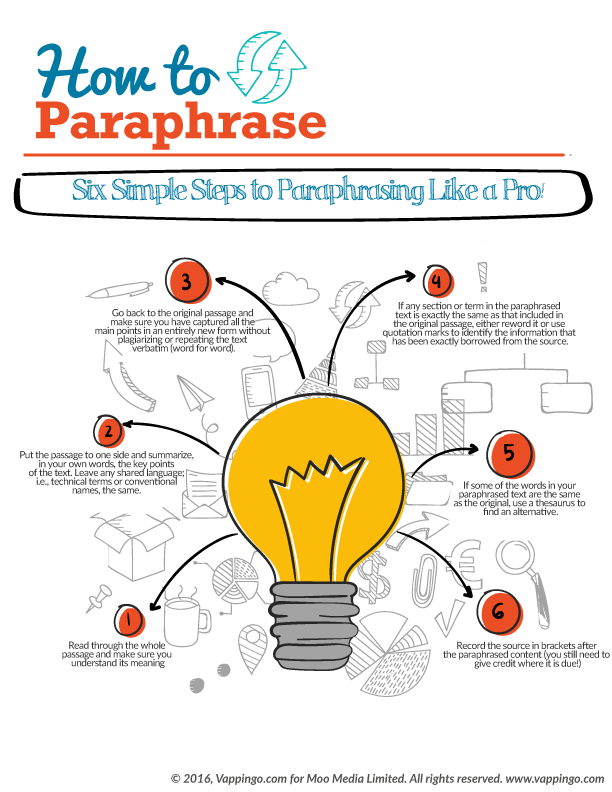If you want to rock that degree and don the mortarboard, you need to learn how to paraphrase effectively.

Why You Need to Know How to Paraphrase
Don’t fall for any of that claptrap that paraphrasing is nothing more than cleverly disguised plagiarism.
ALL the best students know how to paraphrase.
In fact, quite often, the only thing that separates those who get the A grade from the bottom-of-the-class stragglers is that some people know how to paraphrase better than others… something that academic editors know only too well.
If you want to write a good essay, knowing how to paraphrase effectively is pretty much essential. The only other two options you have are:
- Copy a great essay or passage word for word and hope your prof. doesn’t notice, or
- Write an essay that is one steady stream of direct quotation after direct quotation.
Neither of these will win you any brownie points… but paraphrasing will.
However, don’t be tempted to use a rewriting tool or spinner because the don’t work. You’ll just be wasting your time and money.
Paraphrasing Versus Quoting
Quoting
When you quote a passage, you copy the exact words directly into your paper and attribute the quotation to the source. You let your professor know that you have copied the text by surrounding it with quotation marks; for example:
“The new clown will register his or her formal clown name with the official clown registry no less than ten days before and no sooner than forty-five days before the first official performance” (Clown Association of Timbuktu, 2017).
Paraphrasing
When you paraphrase material, you include all the key points but use your own words.
To paraphrase effectively without setting the plagiarism alarm bells ringing, you need to use as few words as possible from the original passage without changing its meaning. You can read more in our guide to how to rewrite articles without plagiarizing.
Even though you have paraphrased the material, you will still need to cite it. Otherwise, you are still taking credit for someone else’s work.
According to the Clown Association of Timbutu (2017), new clowns are required to formally register their clown names at some point between 45 and 10 days in advance of their first public performance.
If you need help paraphrasing, check out our paraphrasing services.
How to Paraphrase
Learning how to paraphrase can be a breeze. Follow the steps in our free printable guide to paraphrasing (below), and you’ll be amazed how easy it is.

- Read through the whole passage and make sure you understand its meaning.
- Put the passage to one side and summarize, in your own words, the key points of the text. Leave any shared language; i.e., technical terms or conventional names, the same.
- Go back to the original passage and make sure you have captured all the main points in an entirely new form without plagiarizing or repeating the text verbatim (word for word).
- If any section or term in the paraphrased text is exactly the same as that included in the original passage, either reword it or use quotation marks to identify the information that has been exactly borrowed from the source.
- If some of the words in your paraphrased text are the same as the original, use a thesaurus to find an alternative.
- Record the source in brackets after the paraphrased content (you still need to give credit where it is due!).
Paraphrasing Checklist
- Is the text written in your own words?
- Have you placed any phrases that are from the original source in quotation marks and cited accordingly?
- Have you cited the source of the paraphrased content?
Do your paraphrasing skills still suck? Get professional help! Check out our rewriting services. English rewriters can transform quotes into valid paraphrased content that contain zero plagiarism while reflecting the original meaning of the text. Take a look at our online rewriting services now.

4 thoughts on “How to Paraphrase in Six Super-Simple Steps”
Comments are closed.